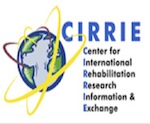


Google Scholar citation report
Citations : 5373
ASEAN Journal of Psychiatry received 5373 citations as per google scholar report
ASEAN Journal of Psychiatry peer review process verified at publons
| Journal Name | ASEAN Journal of Psychiatry (MyCite Report) | ||||
|---|---|---|---|---|---|
| Total Publications | 456 | ||||
| Total Citations | 5688 | ||||
| Total Non-self Citations | 12 | ||||
| Yearly Impact Factor | 0.93 | ||||
| 5-Year Impact Factor | 1.44 | ||||
| Immediacy Index | 0.1 | ||||
| Cited Half-life | 2.7 | ||||
| H-index | 30 | ||||
| Quartile |
|
- Anxiety Disorders
- Behavioural Science
- Biological Psychiatry
- Child and Adolescent Psychiatry
- Community Psychiatry
- Dementia
- Community Psychiatry
- Suicidal Behavior
- Social Psychiatry
- Psychiatry
- Psychiatry Diseases
- Psycho Trauma
- Posttraumatic Stress
- Psychiatric Symptoms
- Psychiatric Treatment
- Neurocognative Disorders (NCDs)
- Depression
- Mental Illness
- Neurological disorder
- Neurology
- Alzheimer's disease
- Parkinson's disease
Abstract
DIAGNOSTIC DIFFICULTIES IN A PATIENT WITH HUNTINGTON DISEASE WITH SCHIZOPHRENIA LIKE PSYCHOSIS �?? A CASE REPORT
Author(s): Jitendra Rohilla, & Pinki TakObjective: Psychotic symptoms could be first presentation of neurological disorder before the appearance of cognitive and motor disturbance. This can lead to diagnosis of psychiatric illness in early phase and later appearance of motor disturbances could be seen as a side effect of anti-psychotic medications, leading to the delayed diagnosis of primary neurological disorder. The objective of this case to present a patient diagnosed initially with schizophrenia but careful consideration of pattern of motor abnormality and cognitive decline resulted in final diagnosis of Huntington disease behind schizophrenia. Methods: A patient of schizophrenia with cognitive decline and motor disturbance was investigated for the possibility of an undiagnosed neurological disorder. Results: Decline in patient’s cognitive functions appeared to be rapid and severe as compared to relatively short duration of diagnosed psychiatric illness. Also motor abnormality of ataxia and choroeathtoid movements after improvement in features suggestive of antipsychotic induced parkinsonism, ie. bradykinesia, rigidity and tremors do not appear to be explained by psychotic illness only. Later, genetic testing for CAG trinucleotide repeats resulted in a primary diagnosis of Huntington disease. Conclusion: The index case suggests the need for analysis of motor abnormality and cognitive decline in a patient with a diagnosis of psychotic illness before attributing them to be the consequence of psychiatric illness. Whenever there is suspicion, further assessment for a neurological disorder should be performed, which may provide the opportunity for early diagnosis and accurate treatment of both entities.


























